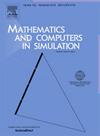基于事件触发脉冲控制的非线性随机系统镇定
IF 4.4
2区 数学
Q1 COMPUTER SCIENCE, INTERDISCIPLINARY APPLICATIONS
引用次数: 0
摘要
利用事件触发脉冲机制(ETIM)和控制理论研究非线性随机系统的稳定问题。得到了实现渐近稳定(AS)、有限时间稳定(FTS)和有限时间收缩稳定(FTCS)的充分判据。在ETIM中,分别引入了定时器阈值和自由控制指标,有效地防止了芝诺行为和不必要的脉冲,从而节约了控制资源。此外,脉冲策略是通过考虑系统的当前状态和过去信息来制定的,从而产生包含共同和延迟相关特征的脉冲。研究结果表明,系统的稳定性受随机系统、脉冲强度、时滞和ETIM的影响。结果表明,脉冲强度和脉冲序列是影响系统稳定性的主要因素,而脉冲时延对系统稳定性有负面影响。将所得准则应用于一个随机网络系统,通过算例和数值模拟验证了所得准则的有效性。本文章由计算机程序翻译,如有差异,请以英文原文为准。
Stabilization of nonlinear stochastic systems via event-triggered impulsive control
This paper addresses the problem of stabilizing nonlinear stochastic systems using an event-triggered impulse mechanism (ETIM) and control theory. Sufficient criteria for achieving asymptotic stability (AS), finite-time stability (FTS), and finite-time contraction stability (FTCS) are obtained. In the ETIM, respectively, the timer threshold and free-control indexes are introduced to effectively prevent Zeno behavior and unnecessary impulses, thus conserving control resources. Furthermore, the impulse policy is formulated by considering both the current state and past information of the system, resulting in the generation of impulses that encompass both common and delay-dependent characteristics. The research findings reveal that the stability of the system is influenced by the stochastic system, impulse strength, time delay, and the ETIM. It is demonstrated that the impulse strength and the impulse sequence are the primary factors contributing to system stability, while time delay in impulse has a negative impact. The obtained criteria are applied to a stochastic network system, and the validity of the results is supported through illustrative examples and numerical simulations.
求助全文
通过发布文献求助,成功后即可免费获取论文全文。
去求助
来源期刊

Mathematics and Computers in Simulation
数学-计算机:跨学科应用
CiteScore
8.90
自引率
4.30%
发文量
335
审稿时长
54 days
期刊介绍:
The aim of the journal is to provide an international forum for the dissemination of up-to-date information in the fields of the mathematics and computers, in particular (but not exclusively) as they apply to the dynamics of systems, their simulation and scientific computation in general. Published material ranges from short, concise research papers to more general tutorial articles.
Mathematics and Computers in Simulation, published monthly, is the official organ of IMACS, the International Association for Mathematics and Computers in Simulation (Formerly AICA). This Association, founded in 1955 and legally incorporated in 1956 is a member of FIACC (the Five International Associations Coordinating Committee), together with IFIP, IFAV, IFORS and IMEKO.
Topics covered by the journal include mathematical tools in:
•The foundations of systems modelling
•Numerical analysis and the development of algorithms for simulation
They also include considerations about computer hardware for simulation and about special software and compilers.
The journal also publishes articles concerned with specific applications of modelling and simulation in science and engineering, with relevant applied mathematics, the general philosophy of systems simulation, and their impact on disciplinary and interdisciplinary research.
The journal includes a Book Review section -- and a "News on IMACS" section that contains a Calendar of future Conferences/Events and other information about the Association.
 求助内容:
求助内容: 应助结果提醒方式:
应助结果提醒方式:


